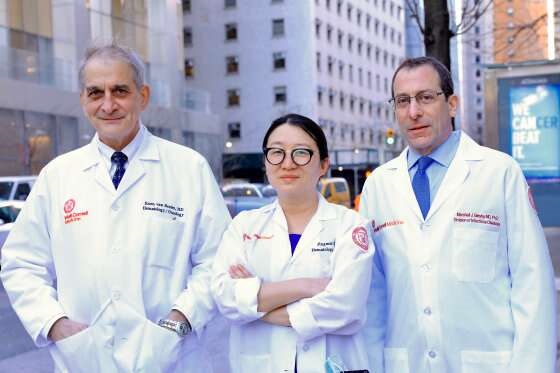An American research team reported that it has possibly cured HIV in a woman for the first time. Building on past successes, as well as failures, in the HIV-cure research field, these scientists used a cutting-edge stem cell transplant method that they expect will expand the pool of people who could receive similar treatment to several dozen annually.

Their patient stepped into a rarified club that includes three men whom scientists have cured, or very likely cured, of HIV. Researchers also know of two women whose own immune systems have, quite extraordinarily, apparently vanquished the virus.
Carl Dieffenbach, director of the Division of AIDS at the National Institute of Allergy and Infectious Diseases, one of multiple divisions of the National Institutes of Health that funds the research network behind the new case study, told NBC News that the accumulation of repeated apparent triumphs in curing HIV “continues to provide hope.”
“It’s important that there continues to be success along this line,” he said.
In the first case of what was ultimately deemed a successful HIV cure, investigators treated the American Timothy Ray Brown for acute myeloid leukemia, or AML. He received a stem cell transplant from a donor who had a rare genetic abnormality that grants the immune cells that HIV targets natural resistance to the virus. The strategy in Brown’s case, which was first made public in 2008, has since apparently cured HIV in two other people. But it has also failed in a string of others.
This therapeutic process is meant to replace an individual’s immune system with another person’s, treating their cancer while also curing their HIV. First, physicians must destroy the original immune system with chemotherapy and sometimes irradiation. The hope is that this also destroys as many immune cells as possible that still quietly harbor HIV despite effective antiretroviral treatment. Then, provided the transplanted HIV-resistant stem cells engraft properly, new viral copies that might emerge from any remaining infected cells will be unable to infect any other immune cells.
It is unethical, experts stress, to attempt an HIV cure through a stem cell transplant — a toxic, sometimes fatal procedure — in anyone who does not have a potentially fatal cancer or other condition that already makes them a candidate for such risky treatment.
Dr. Deborah Persaud, a pediatric infectious disease specialist at the Johns Hopkins University School of Medicine who chairs the NIH-funded scientific committee behind the new case study (the International Maternal Pediatric Adolescent AIDS Clinical Trials Network), said that “while we’re very excited” about the new case of possible HIV cure, the stem cell treatment method is “still not a feasible strategy for all but a handful of the millions of people living with HIV.”
Pushing the envelope in HIV-cure science
Dr. Yvonne J. Bryson, a pediatric infectious disease specialist at UCLA’s David Geffen School of Medicine, described the new case study on Tuesday, February 15, 2022, at the virtually held annual Conference on Retroviruses and Opportunistic Infections.
The “New York patient,” as the woman is being called, because she received her treatment at New York-Presbyterian Weill Cornell Medical Centre in New York City, was diagnosed with HIV in 2013 and leukemia in 2017.
Bryson and Persaud have partnered with a network of other researchers to conduct lab tests to evaluate the woman. At Weill Cornell, Dr. Jingmei Hsu and Dr. Koen van Besien from the stem cell transplant programme paired with infectious disease specialist Dr. Marshall Glesby on patient care.
This team has long sought to mitigate the considerable challenge investigators face in finding a donor whose stem cells could both treat a patient’s cancer and cure their HIV.
Traditionally, such a donor must have a close enough human leukocyte antigen, or HLA, match to maximise the likelihood that the stem cell transplant will engraft well. The donor must also have the rare genetic abnormality conferring HIV resistance.
This genetic abnormality largely occurs in people with northern European ancestry, and even among people native to that area, at a rate of only about 1 percent. So for those lacking substantial similar ancestry, the chance of finding a suitable stem cell donor is particularly low.
In the United States, African Americans comprise about 40 percent and Hispanics about 25 percent of the approximately 1.2 million people with HIV; whites comprise some 28 percent.
By Benjamin Ryan, NBC News

